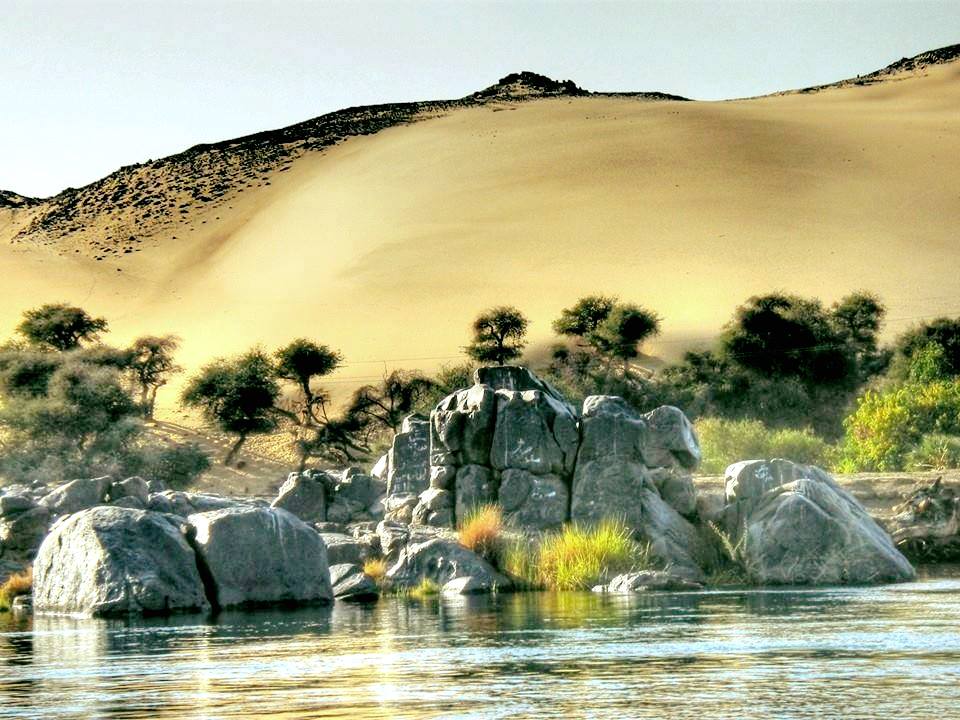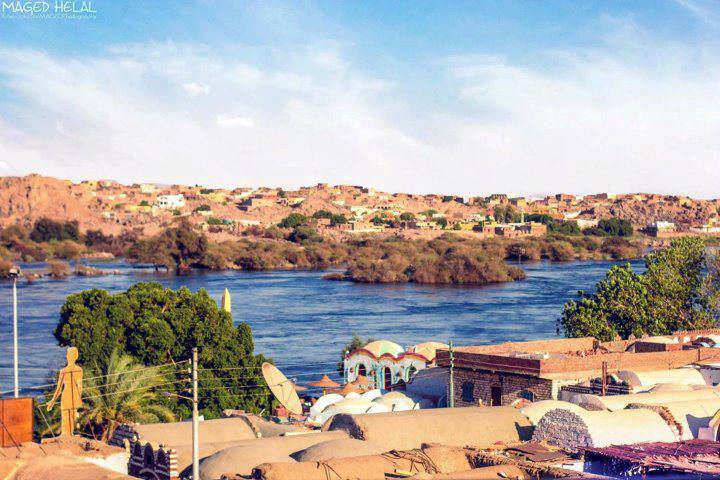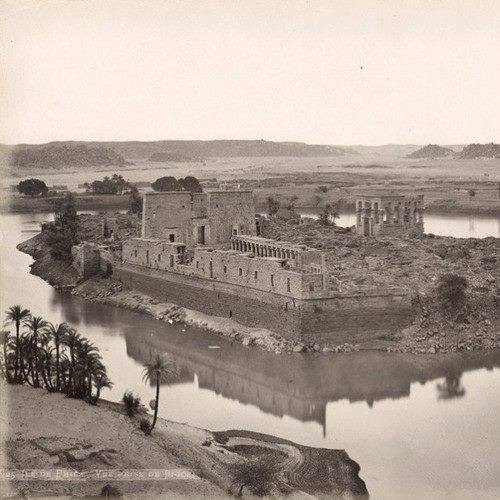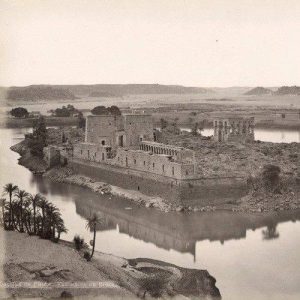My story today is about the Nile River. I will talk about a study published in the journal Earth and Planetary Science Letters for 2018. Let us know how much important information is about the Nile, ancient and modern, how many branches of the Nile and the age of the Nile
The word the Nile itself is of Egyptian origin and is derived from Na Etro, which means a river with branches, Etro Nokimet, meaning the branches of the black earth or the course of the Nile. It is the longest river in the world and covers a distance of about 6,671 km. It is fed by two main tributaries: the White Nile from the Lakes Plateau, Lake Victoria, and the Blue Nile from Ethiopia, Lake Tana.
The Nile River passes through 11 African countries: Egypt, Sudan, Uganda, Ethiopia, Congo, Tanzania, Rwanda, Burundi and Kenya.
During the course of travelling these distances, the river passed through dry environments and had its sources not been rich in the rain in summer and winter, the water level in it would have decreased, and its importance would have diminished.
An Egyptian beginning to explore the sources of the Nile
Historical documents indicate that there was contact between the ancient Egyptians and areas located in southern Egypt, the country of Kush, Yam and Punt, which suggests that some Egyptians are familiar with the Bahr al-Ghazal region, one of the tributaries of the Nile in southern Sudan, since the times of the ancient state. Sixth Dynasty, mostly princes of Aswan, southern Egypt.
The ruler of the south, named Harkhof, organized four expeditions to Africa on the orders of the two kings, Mer-en-Ra and Pepi II, around 2200 BC. Harkhouf was keen to record the facts of his travels in his tomb in Aswan. Pharaohs in the Kingdom of Egypt at the time of the gods’ kings
“My lord, your majesty Mr-en-Re, accompanied me by my father, the only friend and chanter-priest Eire, sent me to the land of Yam to explore its paths. I accomplished this task in seven months and brought from it all kinds of (gifts) both beautiful and rare, and for that, I received all praise. The text was, and the French Vandier says that water in the ancient Egyptian religious thought represents an essential element from which new life emerges. To the eternal ocean, the sun devolves at the time of twilight to transmit a new active force in it.
The ancient Egyptians assigned some deities associated with the Nile River, the most famous of which is the god Hapi and Khnum, who represents the annual flood of the Nile and the source of the first life in general from the beginning of creation and the source of the first life of the ancient Egyptian.
Khnum was the god of the Nile with the head of a ram, the lord of water, who brings life on the river banks, where plants grow, and animals multiply. Because silt is formed after the flood, it was believed that Khnum also creates humans.
Elephantine Island in the city of Aswan was home to the cult of Khnum, and his temple is located in the city of Esna, 60 km south of Luxor Governorate in Upper Egypt.
As for the god Hapi, he was the one in control of the Nile flood, and the bisexual god appears, as he has masculine features and a female body, which reflects the character of the father and mother of the Nile. Therefore he can achieve fertility and longevity.
The word Habi means happy in the ancient Egyptian language. There are many inscriptions in the temples of Karnak and Luxor, where they joined with the lotus and papyrus, which indicates the union of Upper Egypt represented in its emblem with a lotus flower and the Lower represented in its emblem on papyrus.
The sanctification of the Nile and the Egyptian keenness to purify the river’s water from every impurity was considered a sacred duty. Whoever polluted this water would be punished for violating the wrath of the gods on the Day of Judgment.
An ancient text indicates that whoever pollutes the Nile water will suffer the wrath of the gods, and the Egyptian affirmed in his denial confessions in the other world that he did not prevent the flow of water to ward off good, as stated in Chapter 125 of the text.
Exit to the day from the Book of the Dead.
Through the Egyptian General Authority for Tourism, the Ministry of Water Resources and Irrigation published a map from the book Geography of Egypt by Prince Omar Toson, as described by Gerges Al-Qebsi, the Byzantine historian, at the end of the seventh century AD.
The map reveals that the Nile River consisted of 7 different branches in the delta from east to west, of which 5 branches have disappeared, and two of them remain today, known as the Damietta and Rashid branches.
The map also revealed that the Nile River used to reach Sinai through a branch called Al-Bayluzi, which was named after the town of Belzium. The Pelosi branch of the Nile extends north of the village of Balooza, whose name came as a result of its distortion of the name “Biluzim on the road to Al-Qantara Al-Arish. It was the most important fortress defending the delta from the east.
Like other branches of the Nile, this branch has disappeared as a result of the increase in the rate of siltation.
Abbas Sharaki, professor of geology and water at Cairo University 🇪🇬 says that what distinguishes the current study from others confirms that the Nile River was its course as it is now coming from Ethiopia and the tropical region and heading to the Mediterranean Sea. While previous studies say that it formed about 6 million years ago, its path was internal to Egypt and not connected to Sudan.
In that period, the river was fed by dry valleys that originate from the Red Sea Mountains. As a result of volcanic activity in Ethiopia, the course of the Blue Nile heading north from Lake Tana changed to its direction south and then west to Sudan and then to Egypt and led to the capture of the rivers that originate from the Red Sea Mountains. Then it heads to the Mediterranean, where the mouth of the Nile. River streams are small river courses similar to rivers, and they are less in terms of the length and width of the stream, and the same is the amount of water.
It has been proven that the age of the Nile is 30 million years.
The Nile River
July 23, 2021
0 comment












Comment (0)